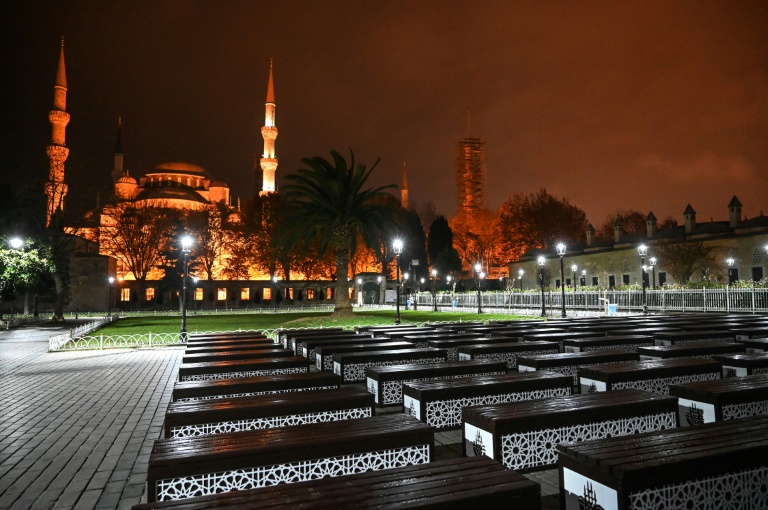Turkey has imposed a hefty fee for foreign tourists who wish to visit an iconic structure in Istanbul.
Istanbul is the largest and the most popular city in Turkey. It has a unique geographical crossover as it lies on two different continents: Asia and Europe. A trip to Istanbul is incomplete unless one visits the Hagia Sophia, a 1,600-year-old Byzantine Cathedral-turned-mosque.
One of Istanbul’s most popular attractions, Hagia Sophia was transformed strictly into a mosque in July 2020. From here on, anyone who’s not a Turkish worshipper will have to pay a fee of £21.50 (€25) to enter or even pray at Hagia Sophia.
The new entry fee was brought into place by the Turkish government on Jan. 15. Anyone visiting Hagia Sophia will see an orange sign at the esplanade in front of the main entrance, which will direct foreigners to a side entrance with eight ticket booths.
Over-tourism at Hagia Sophia
The Hagia Sophia, a UNESCO World Heritage site, welcomes around 3.5 million visitors each year. In order to deal with the mass tourism and also preserve the historic attraction in the process, UNESCO had reportedly recommended that Turkey needed to do more to combat the number of visitors.
Therefore, as part of a wider visitor management plan, Turkish authorities have set up security cameras, fire detection and emergency communication systems, along with the imposition of a new fee on foreign tourists.
Turkey’s Minister of Culture and Tourism Mehmer Nuri Ersoy said that the visitor management plan should “streamline the flow of visitors, reduce overcrowding and protect the historical and cultural significance of Hagia Sophia”, according to the Greek Reporter.
The structure reflects the diverse history of Istanbul and so, Turkey needs to go out of its way to take care of Hagia Sophia. The building’s journey began as the Church of Divine Wisdom in 537 AD before turning into a mosque in 1453. In 1935, it was converted into a museum and then again transformed to a mosque. It has existed since the city was known as Constantinople, all throughout the Ottoman Empire until now.
Damagesat Hagia Sophia
Some people still believe the current measures being taken to protect Hagia Sophia aren’t enough. Back in October 2023, Ilber Ortayli, a Turkish expert, said that even a small number of around 20-30,000 visitors per year could risk damaging the mosque. Ortayli believes Hagia Sophia should be closed for restoration. He went on to add that even if the building functions just as a place of worship, it has already undergone significant damage since its conversion into a mosque.
The authorities should not even consider installing toilets or fountains in the building, according to Ortayli.
In June 2022 a number of tiles of the ancient marble floors in Hagia Sophia were damaged by heavy machines used to clean the site. In April, of the same year, the Turkish Association of Art Historians stated that the historic Imperial Gate in Hagia Sophia had been badly damaged. The group reportedly shared a picture clearly depicting the damage to the oak wood of the 15-century-old gate.
Combating mass tourism in Europe
Over-tourism has been one of the major issues in Europe and many cities have been fighting back to preserve their surroundings. Amsterdam, which is considered one of the most popular party places in Europe, has launched “stay away” ads aimed at badly behaved British tourists, while Venice has introduced an entry fee for tourists making a day trip.
The Italian hotspot is also planning to limit tourist groups to 25 people and also ban the use of loudspeakers. The new rules will apply to the Venice city centre and the islands of Murano, Burano and Torcello. The city council has stated that the latest announced regulations are intended to shield residents from noise and nuisance.







)